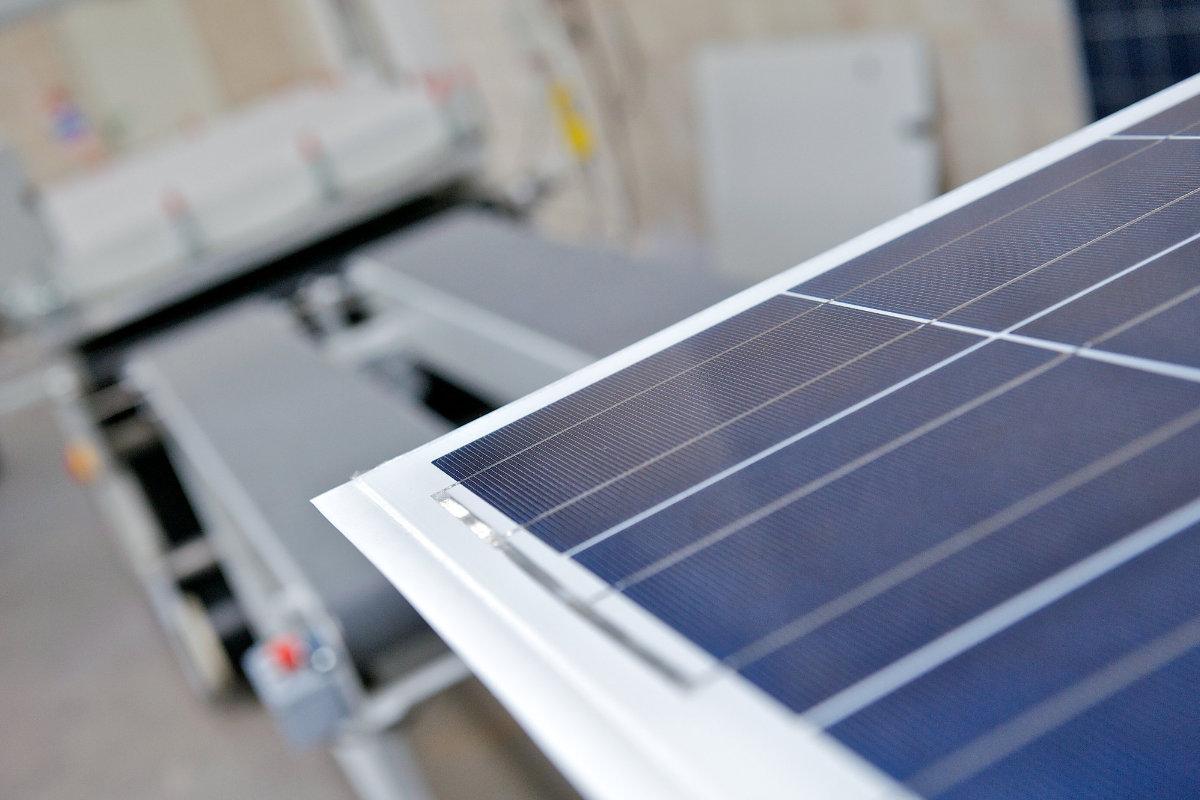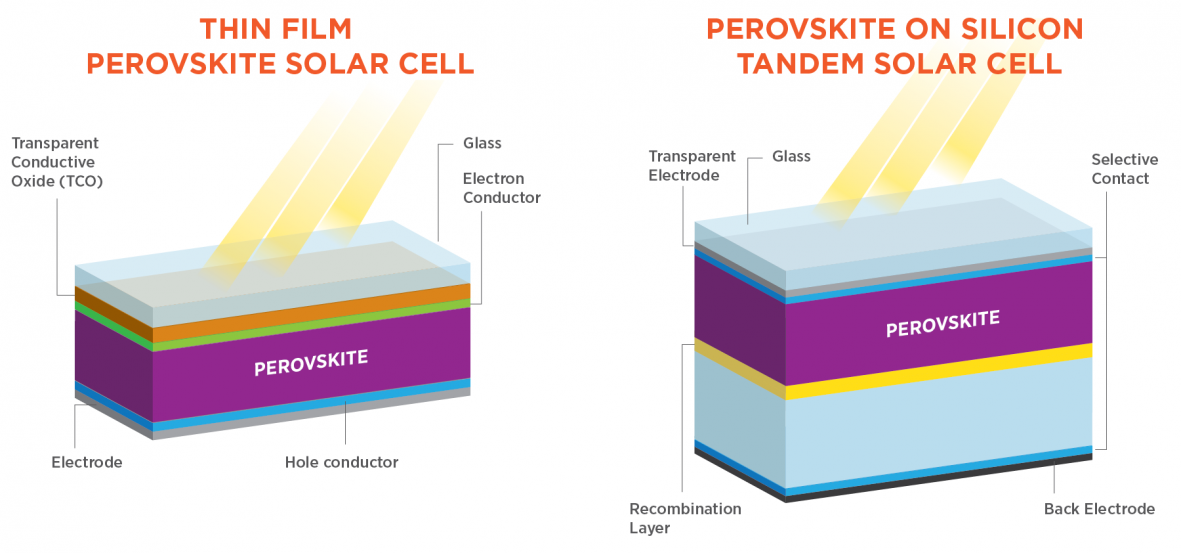Silicon is by far the most common material in photovoltaic solar, but that could all change in the next decade as researchers around the world continue to develop new photoelectric materials.
In a June 2019 webinar for the publication, Nature Research, University of Notre Dame professor Prashant Kamat walked through some of the most promising new thin film solar technologies that could one day take the place of silicon.
Searching for a silicon replacement
Why are we even looking for a replacement for silicon?
In the 1950s, when researchers at telephone company, Bell Labs, first discovered silicon’s photoelectric effect – that is, its ability to create electricity from sunlight – they were bucking almost 100 years of scientific research into selenium, at the time considered the most promising photoelectric element. While selenium was stuck around 1% efficiency, Bell Labs’ solar cell was a then-incredible efficiency of 6%. To prove the validity of this new source of electricity, Bell Labs sold a small toy Ferris Wheel powered by solar energy, the first commercial solar panel ever made.
Since then, the solar industry has largely focused on silicon for solar cells and today silicon accounts for the vast majority of solar cells produced worldwide.
Now nearing 70 years old, silicon is a mature technology, time-tested and reliable. However, silicon isn’t perfect. First, silicon’s theoretical maximum efficiency is 33%. Secondly, manufacturing silicon solar cells uses caustic chemicals and is so labor intensive, it suffers from a massively large carbon footprint. In the webinar, Professor Kamat noted that a solar panel needs about three years of electricity generation just to offset the emissions from its own manufacturing.
Researchers are actively looking to new thin-film solar technologies – a catch-all term for new photoelectric materials that are lighter, thinner, and easier to manufacture than silicon – to drive the next wave of solar. Similar to Bell Labs’ switch from selenium to more-efficient silicon, many of today’s new solar technologies also show potential far greater than silicon, whether it’s greater efficiency, lower production costs, or a smaller carbon footprint.
Perovskite solar cells could be the next big thing
Perovskite solar cells are one of the most exciting solar technologies researchers are currently developing. Unlike silicon solar cells, which require specialized, expensive equipment and hours of labor, making perovskite cells is actually quite simple and can be manufactured in any lab. Just mix up the ingredients and stir for a couple hours. After that, spin the coating onto an electrode solution. The whole solution turns black, and you’re done. Sounds pretty simple, right?
Beyond the easy manufacturing process and the promise of low production costs, the solar industry has jumped on perovskite as the next big thing because of its incredible efficiency gains. In 2009, the best perovskite solar cells were just 3% efficient. Jump forward to 2019 and that efficiency has increased to 24%. This efficiency gain is light speed compared to silicon solar cells, which took about 40 years to see a similar increase.
While perovskite is a material found in the natural world, perovskite solar cells don’t actually use the perovskite mineral. Instead, they use perovskite’s crystalline structure. By combining different elements within this structure, scientists can produce different actions, including photoelectricity.
Of course, perovskite solar cells aren’t without their own challenges. Perovskites are still too unstable to be useful and two leading perovskite technologies – lead-halide and quantum dot perovskites –both use lead, a poisonous metal. Researchers are trying to create lead-free perovskites using tin, but at the moment they’re also highly unstable.
How about combining two types of solar?
All photoelectric materials, like silicon or even perovskites, have a limit to their own efficiency. Silicon maxes out around 33%. Perovskites max out around 26%. We’ve still got room to grow, as our best silicon cells are only about 25% efficient and our perovskites are 24% efficient, but researchers are already looking into how we can bypass these efficiency caps.
The most promising system is simply combining two different solar technologies. Perovskite and silicon both absorb different light colors, for example, so by placing a perovskite cell on top of a silicon cell, you can increase the overall efficiency of the product.
These combined solar cells, called multi-junction solar cells, can bump the efficiency of a single solar cell into the high 30s and even 40s. The coolest part? Multi-junction cells are already in use! Unfortunately, they’re prohibitively expensive and only used in spacecraft and other high-intensity applications.
Next big solar tech is anyone’s guess
While perovskite and multi-junction solar cells are some of the most promising new solar technologies, they aren’t the only ones out there. In the last decade, organic ternary solar cells – cells made from chains of carbon molecules – have emerged as promising new solar tech, thanks to their low production costs, thinness, and flexibility. But like the others, organic solar cells are still years away from commercialization, as they are still dreadfully inefficient and degrade quickly, lasting just a few years in the outdoors.
So what’s the big takeaway from all this? The next big solar technology is anyone’s guess. Kamat admitted during the Q&A that perovskites seem like the most promising new technology, but stressed that all the new cell types still need lab and field testing and are years away from commercialization.
Professor Kamat also noted that any new tech that wants to topple silicon – a mature and trusted product – must be transformative, offering features that silicon simply can’t. Whether that is greater efficiency like multi-junction cells, lower cost like perovskites, or greater versatility like organic cells – or perhaps even some yet-to-be-discovered product that offers all three – is yet to be seen.
Image Source: CC license via Flickr






